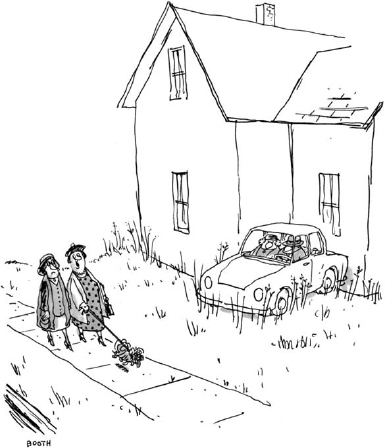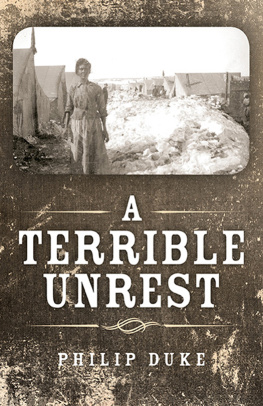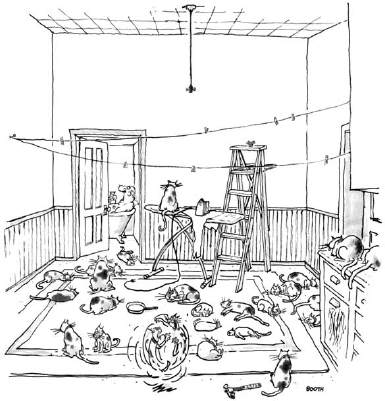INTRODUCTION
Americans are in the middle of a weight crisisno, were not talking about too many french fries, were talking about stuff. Almost everyone has more things than they can easily keep track of or find room for. But it doesnt become a crisis until you decide to move to a condo or an apartment in the city, or retire and want to set up a part-time business office or art studio in your current home. Or you suddenly need to sort through the belongings of an older family saver who is moving to assisted living. Or youre simply tired of the sprawl and want to live more lightly or compactly in environmentally sound ways.
Over the years, as professional organizers, we have worked with people in similar situations doing everything from rearranging furniture to putting photographs in albums, from packing up their belongings for a move to moving pack rats emotionally from overwhelmed to sane. Our clients have ranged from people who felt so motivated (or embarrassed) that they stayed up till 3:00 A.M. the night before we came tossing things out, to people initially unwilling to discard a single bent hanger.
But we have found that just getting rid of possessions and scaling down physically is not enough. In order to be successful, you need to have a direction, a positive goalwhether it is a beautiful, more compact space, a functional workshop, a sense of freedom and control, or the joy of financially exchanging stuff for new experiences and pleasures. To do this, we have used a Mission Statement with our clientele, and we will take you through the process as well. This, as well as the techniques we suggest, can help you overcome the inevitable roadblocks. Because people tend to remember personal stories rather than just theory, we have included many examples.
There are practical reasons to go through the scaling-down process. But we are also promising you a simply beautiful home, filled only with what you love and use, a place that uses every inch of space the way you want. We are offering you control over your environment and freedom from chaosas well as a chance to complete a task for someone else, which you may not be looking forward to, in a way that is, ultimately, satisfying.
By the time you finish this book, your home, old or new, and the way you look at stuff will be forever changed. So lets get started!
part 1
THE CHALLENGE OF SCALING DOWN

I understand the house is a mess inside.
HOW DID WE GET HERE?
When Mother Teresa died, the media reported that she left behind only a bed, a chair, and a blue sweater. Your reaction is (a) How wonderful to be so focused, to have only what you need and nothing more! (b) Thats all well and good, but I could never live that way, or (c) How did she ever manage without a PalmPilot?
Though many of us fantasize about traveling around the world, carefree, with everything we own in one suitcase, our real lives and our relationship to our stuff is far more complicated. A bag lady can fit everything she owns into a shopping cart and travel light, but most of us are secretly afraid of ending up that way. We calm our fears by acquiring a cushion of possessions to reassure ourselves and other people that that wont happen.
We also live in a country where it seems un-American not to have more things than we can keep track of, a society in which the largest homes, automobiles, or cheeseburgers are believed to be the best. Our instinct to accumulate has deep roots. Our parents or grandparents, in the shadow of the Depression, learned to keep an iron grip on anything that might still have some good in it. Little got thrown away. Then in the postwar 1940s and 1950s, Americans were encouraged to Buy, buy, buy! and to acquire every luxury they could afford. An anonymous government film from the late 1940s extols the pleasure of buying, the spending of money! And the enjoyment of all the things that paychecks can buy are making happy all the thousands of families!
Awkward grammar aside, from patriotic spending, we segued into a society in which items began being manufactured so cheaply that when you couldnt find the one you owned, you just bought another. The Reagan years popularized visible consumption by the wealthiest Americans. The Joneses that our parents were encouraged to keep up with were left in the dust; the introduction of upscale advertisements, Horchow catalogs, and Lifestyles of the Rich and Famous showed what abundant living actually meant. Now, instead of just the Joneses, we started comparing ourselves with millionaires.
THE CROWDED PRESENT
Even if you feel that does not describe you, you are probably bobbing around in a sea of too much stuff. A sociologist friend has the theory that people spend the first 40 years of their life enthusiastically accumulating and the next 40 years trying to get rid of the excess. That makes sense. As young adults, we start out with little but old term papers and cute stuffed animals. We quickly acquire cast-off furniture and household accessories donated by family members and friends, gratefully accepting anything free. Weddings generate gifts, often in multiples, sometimes items we didnt even realize existed. An electric bagel cutterwho knew?
Once we have a place to live, we head for our stores of choice, Ikea or Pottery Barn or Target, and purchase everything else we have been told we have to have. Credit cards make it easy to buy everything at once. And so we keep on accumulating until, one day, we realize that we have been buried alive, that too much of our time is spent managing stuff or just trying to find it. It may not be until a major life change such as moving forces us to take action.
Once in a while, a wake-up call comes sooner. Judis came when she was in her early thirties and spent a week at the beach in a vacation house. The kitchen contained only the essentials that were needed to make easy meals; the living room and bedroom could be straightened up in a matter of minutes, leaving the family free to relax and explore for the rest of the day. For the first time in her life, she knew exactly where everything was. The experience was an epiphany. She came home determined to have that vacation house feeling for the rest of her life.
GETTING THE VACATION HOUSE FEELING
Unlike Marj, who was organizing her aunts cupboards at 9 years oldand whose numerous moves as an adult kept her from excessive accumulationJudi was a disaster. She was an artist and writer whose materials were everywhere, a collector of memorabilia and injured furniture that she planned to turn into antiques. Her husband, Tom, stockpiled music and photography magazines as well as the gadgets that went with them. Her son had the full gamut of toys and school papers. Worst of all, her mother was a professional shopper; at holidays, her family was inundated with clothing and antiques.
And those were just the personal complications, added to the pressure of abundance as the way to show that you were a respectable American. Judis parents had come of age during the Depression and passed along its characteristic sense of responsibility for everything that crossed your path, down to the fat red rubber bands that held the stalks of broccoli together and were too good to throw away. The rubber bands joined the little packets of soy sauce, free coupon books, and mystery screws as protected species.










